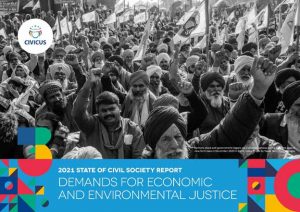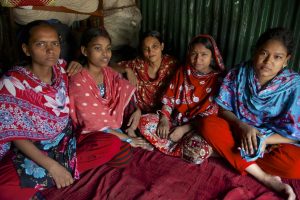By Nilanjan MukhopadhyayThis body resolves to “condemn violence in any form committed to disturb communal harmony and to deal with all those indulging in such violence in a prompt and resolute manner under the law.”Normally, such a declaration need not be made in a country which has just faced a serious bout of social violence waged on religious lines. But on September 23, the Indian government convened a meeting of the non-partisan National Integration Council (NIC) to pass resolutions that, besides reiterating platitudes, failed to make any fresh attempts at controlling the communal menace, so integral to India from the colonial era.
Latest figures from India’s Home Ministry show that more than 2,500 people were killed in incidents of communal violence in the country since 2002. So far, 107 have died this year – and the toll is increasing. The deceased have died in almost 8,500 incidents of communal violence in the past decade – a figure which demonstrated that more than two incidents of communal violence have occurred every day somewhere in India. Communal conflict in India is defined as violent clashes between two groups on the basis of their religious identity.
Most often, the clashes are between Hindus and Muslims – India’s largest religious minority with current estimates pegging their population at more than 15 percent of the total. Clashes between Hindus and other religious groups or between Muslims and other religious communities also occur but with no similar regularity. Relations between Hindus and Muslims are steeped in decades-old animosity and resulted in the division of the Indian sub-content when British rule ended in 1947. Pakistan at that time chose to make Islam the official religion while India opted to remain secular and provide equal rights to Muslims and practitioners of all other religions.
Despite this, communal conflict has been a harsh reality as has been the fact that political parties tend to use religious communities as loyal blocks during elections. This practise of framing laws, policy and strategy aimed at assuaging either of the religious minorities or the majority Hindu community has acquired the euphemism of ‘vote bank politics’.
In common discourse this has been used mainly by the Hindu nationalist Bharatiya Janata Party and its allies who have argued that India’s fragile social peace has been repeatedly shattered by attempts to ‘appease’ Muslims and other religious communities. In recent decades this argument has found growing numbers of supporters as people agreed that the Congress party has not put minority communalism and the one propagated by Hindus on an even keel.
Communal violence have provided occasions for all political parties to consolidate their own ‘vote banks’ and attempt to wean away chunks of voters from the stranglehold of other parties. Most of the post-violence social and political discourse is dominated by parties and their supporters taking pot-shots at each other.
The NIC meet was given the cold shoulder by several chief ministers including BJP’s prime ministerial candidate Narendra Modi and several of his likely allies in the elections. The NIC itself is a toothless body which was formed more than 50 years ago with the aim of addressing problems of communalism, casteism and regionalism. Its members are union ministers, chief ministers, leaders of prominent political parties, chairpersons of various constitutional commissions, media persons, business leaders, trade unionists, representatives of women and representative eminent people. The body does not however have any power to make recommendation and resolutions adopted are merely to convey the idea that there is political unanimity across various shades of opinion in India.
But the NIC has also not been taken seriously by successive governments: Monday’s meet was just the 16th of the council with the last one being held almost to the day two years ago. There have been long years when no meeting was held, like between 1968 to1980 and again from 1992 to 2005.
Meanwhile, as the recent violence in Muzaffarnagar, Uttar Pradesh demonstrated, the spread of the communalism has widened areas. Most previous outbreaks of communal violence – barring occasional instances – were urban in nature. Muzaffarnagar, barely 120 km the Indian capital did not have a tradition of communal violence but the present episode left more than 40,000 villagers homeless after targeted attacks resulted in them fleeing from villages dominated by other communities.
In India, communal violence has been on the rise in recent months as the country prepares for the next parliamentary elections with the extreme Hindu nationalist leader Modi at the helm of the BJP. Though Modi has neither paid a visit to any of the riot hit villages or towns, nor has he said anything substantial, his shadow has loomed large over the discourse.
Social peace in India remains fragile and in the past three decades this writer has witnessed social prejudices becoming deeper and social schisms widening further. More Muslims now prefer to live in localities that have a Muslim majority than before and in Hindu dominated localities in cities it is increasingly difficult for Muslims to find houses that they can rent. Even mixed couples – where one of the spouses is a Muslim – now find fewer residential options.
Sixty-six years after India became independent it is still divided on the basis of religious, caste and other secondary identities. These fault lines are used by all political parties for electoral gains. The task for the administration is to prevent more outbreaks of communal violence. But there are times when such fissures are allowed to rupture because it may benefit the party at the helm – as is being alleged in Muzaffarnagar. At other times, the issue remains dormant, yet very much alive. – Eurasia Review




